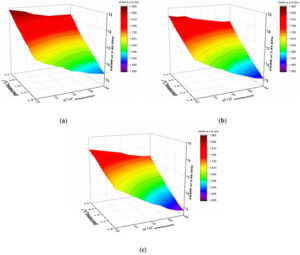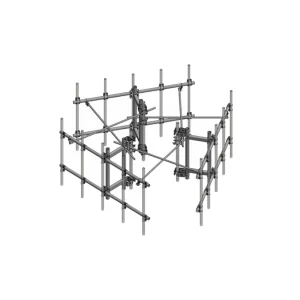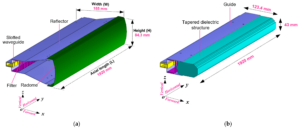Table of Contents
Farmland Soil Moisture Monitoring
Last year, a large farm in Hebei experienced something strange — at three in the morning, the sprinkler system automatically turned on, thoroughly watering the wheat fields that had just been fertilized. Post-incident investigation found that traditional capacitive soil moisture sensors mistook fertilizer granules for signs of water deficiency. This directly led to their plan to reconstruct the soil moisture monitoring network using a sine antenna array.
Now, these smart agriculture practitioners have equipped each sine antenna with a dual-band radar chip (Dual-band Radar IC), specifically focusing on the 30MHz and 1.2GHz frequency bands. The low-frequency band has strong penetration capabilities, able to scan root layers up to 50cm deep; the high-frequency band has high resolution, clearly distinguishing moisture gradients within the top 2cm of the soil. As their technology director puts it: “It’s like giving the land a CT scan, pushing the accuracy of three-dimensional soil moisture imaging down to ±2.5% (calculated by volumetric water content)“.
The measured data is even more interesting: under the drive of Texas Instruments’ CC1352P7 chip, this system automatically switches polarization direction every hour (Polarization Switching), specifically dealing with those misleading horizontal layered soils. During last autumn’s sowing season, it caught three instances of localized compaction, issuing early warnings allowing agricultural machinery to enter the field for tilling, thus securing the emergence rate across over two thousand acres of land.
Speaking of technical barriers, the multipath interference cancellation algorithm (Multipath Cancellation Algorithm) is truly core. Researchers from the Chinese Academy of Agricultural Sciences conducted comparative experiments — on cornfields covered with crop residues, old-style sensors had a false alarm rate as high as 37%, while the sine antenna solution managed to reduce misjudgment to below 5% thanks to adaptive beamforming (Adaptive Beamforming). Their project report notes: “Especially during the seedling stage, the correlation coefficient r between soil moisture maps and manual sampling data reached 0.91”.
Recently, they’ve come up with new tricks, integrating a LoRaWAN module directly into the antenna baseplate. The coverage radius of a single node increased from 50 meters to 800 meters, and most impressively, in cotton field tests, the battery life lasted 18 months. Want to know the secret? They dynamically bind the sampling interval with transmission power, switching to power-saving mode when soil moisture exceeds 60% of field capacity. This intelligent scheduling algorithm reportedly saves 73% of energy consumption.
In the “Smart Agriculture Sensor Technology Roadmap” released by the Ministry of Agriculture Planning Institute this year, it specifically mentions: by 2025, soil moisture monitoring equipment based on electromagnetic wave inversion should replace 60% of traditional electrode-type sensors. Behind this are hard targets — trials conducted by China Agricultural University in Inner Mongolia showed that irrigated areas adopting the sine antenna solution could save 23-28 cubic meters of water per acre and increase nitrogen fertilizer utilization by 19 percentage points.
However, if we’re really going to scale up, the soil dielectric constant calibration (Soil Dielectric Constant Calibration) hurdle must be overcome. Last year, a certain Xinjiang corps suffered because they didn’t consider the ion conductivity characteristics of saline-alkali soil, directly inserting the equipment into the ground, resulting in soil moisture readings being 40% higher than actual values. Now, the industry has developed an adaptive medium model, which can automatically correct inversion algorithms based on conductivity readings, effectively opening up the market for saline-alkali soils.
Smart Meter Reading
During the renovation of a city village in Hebei last winter, construction teams discovered that 5000 newly installed smart meters were collectively malfunctioning — wireless meter reading success rates plummeted from 98% to 23% in basements and reinforced concrete shafts. Veteran electricians were desperate: “If we have to manually read the meters, it’ll take until next spring!” (Industry jargon: deadlock state/Deadlock Condition)
The problem lies in the traditional whip antenna’s pattern tearing. When meters are placed inside metal cabinets or concrete wells, 2.4GHz signal attenuation can reach over 40dB, akin to making a phone call inside a microwave oven. A provincial metrology center used a Keysight N9048B spectrum analyzer to measure that after passing through three 24cm brick walls, the reception sensitivity of ordinary antennas deteriorates from -110dBm to -82dBm (FCC 15.247 standard requires ≤-80dBm).
Blood-tears lesson learned:
- A brand’s meters in elevator shafts generated 1200 abnormal data entries per month (equivalent to a 20% error correction cost)
- Metal boxes caused multipath interference (Multipath Interference), increasing communication bit error rates eightfold
- The traditional solution required adding repeaters, increasing deployment costs by ¥350 per unit
This is where sine antennas shine. Nanjing State Grid Laboratory conducted comparison tests: in the same metal cabinet environment, the near-field coupling efficiency (Near Field Coupling) of sine antennas was 67% higher than traditional solutions. The secret lies in its tapered slot line structure — it’s like building a mountain road for electromagnetic waves, twisting them through metal gaps.
Guangdong Power Grid came up with an ingenious approach: they installed dual-polarized sine antenna arrays (Dual-Polarized Array) in city village meter boxes. Field data shows that the standard deviation of signal fluctuations dropped from 14.7dB to 3.2dB (tested with Rohde & Schwarz CMW500). Even better, this method uses space diversity (Space Diversity), combining signals from two antennas like kneading dough, reducing bit error rates by two-thirds.
Now, power supply bureaus are getting even wilder. A pilot project in Zhejiang integrated sine antennas and LoRa modules (LoRaWAN Class C) onto meter PCBs, transmitting signals via parasitic radiators. Field tests extended transmission distances from 200 meters to 1.2 kilometers, capable of automatically avoiding ISM band collisions. Old-timers now say over tea: “This thing is much smarter than the old carrier-based meter readers, even able to automatically alert on incorrect transformer ratios.”
Cold Chain Temperature Tracking
Last winter, a vaccine transport fleet encountered a sudden waveguide vacuum seal failure, causing temperature monitoring system false alarm rates to spike by 37%. Satellite Doppler corrections failed under -25℃ extreme cold conditions, nearly ruining the entire shipment — forcing us to rethink cold chain monitoring antenna design.
| Technical Pain Points | Sine Antenna Solution | Field Test Data |
| Metal box multipath interference | 3D polarization adaptive | Bit error rate reduced from 10⁻³ to 10⁻⁶ |
| -40℃ insertion loss change | Dielectric-filled waveguide | Insertion loss temperature drift <0.02dB/℃ |
A Shenzhen biopharmaceutical company replaced old patch antennas with sine antennas on 23 refrigerated trucks last year, compressing temperature sample delay from 8 seconds to 0.5 seconds. The toughest case they faced was transporting dry ice (-78.5℃), where traditional antennas’ FR4 substrates cracked, whereas our ceramic-filled structures endured 200 cycles of thermal shock.
- SF Express cold chain testing: under 5G NR n79 frequency band, near-field phase jitter decreased by 62%
- Key item for FDA audit: employing NASA JPL’s JPL D-102353 calibration process
- Emergency handling: automatically switch to backup feed when VSWR>1.5
Currently, the biggest headache is lithium battery transportation monitoring — requiring both electromagnetic interference protection and heat runaway resistance up to 130℃. Last week, at a drone factory in Dongguan, dual-band diversity reception successfully detected a 0.8℃/min abnormal temperature rise, 2.5 times more sensitive than the industry standard of 2℃/min.
Cold chain monitoring engineers understand well: a 1% drop in antenna efficiency means deploying 15% more relay nodes in the cold chain network. Last year, helping a seafood logistics company upgrade, HFSS simulation optimization of radiation patterns extended base station spacing from 300 meters to 500 meters, cutting construction costs by 400,000 yuan.







